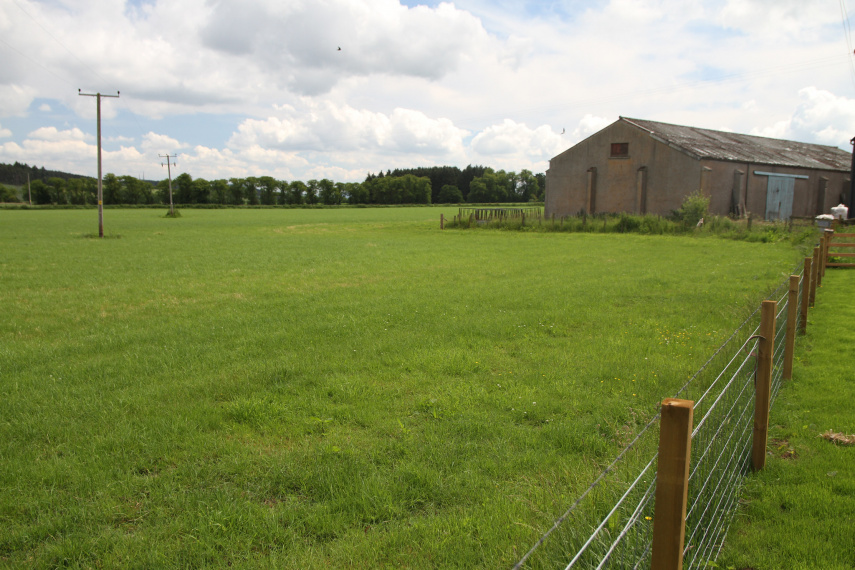
Rural Land Market Insights Report - what does it mean on the ground?
Bob McIntosh
In his latest blog, the Tenant Farming Commissioner, Bob McIntosh, reflects on trends in Scotland's rural land market that we explored in our latest Rural Land Market Insights report.
It will come as no surprise that land prices are high, especially across the rural market in Scotland, and look set to continue rising. The Scottish Land Commission has looked into the driving factors behind this in its recent Rural Land Market Insights report, which compares the year-on-year trends against its report from last year.
The Report notes that record high values have prompted more landowners to sell. Nearly 37,000 hectares of farmland changed hands last year, with a highest per hectare value recorded at just over £15,000, though it is known that good quality agricultural land has changed hands for considerably more. Forestry land prices levelled off at the end of 2022, but although more land has been coming onto the market across the board, demand continues to outstrip supply so it remains very much a ‘seller’s market.’ The UK Forest Market Report for 2022 records an average price paid for land suitable for planting of £16,000 per plantable hectare, three times what it was three years ago.
Commercial forestry remains the biggest influence in driving land values higher, particularly in upland areas, though increasingly we are seeing interest from this sector in mid-grade agricultural land – where forestry interests are outcompeting agricultural buyers. The report’s research also indicates that more land – particularly smaller, upland farming units – is also being sold privately, or ‘off-market,’ to forestry buyers than in previous years. Why the increase in off-market sales? Perhaps there is a perceived stigma about being seen to ‘sell out’ to forestry.
Another influence on agricultural purchases are the looming capital gains rollover deadlines. Farmers who have sold in the past couple of years look as though they are increasingly paying higher prices to make the most of the rollover relief. It is anticipated that this will become a stronger factor on land values in the next few years, as those selling now seek to reinvest. Rising commodity prices also been affecting many individuals’ confidence in the market – high milk prices have prompted dairy farmers to be more confident and active in seeking out expansion opportunities, while beef and sheep units have been more likely to be sold. Wider influences in the farmland market have included uncertainty over future agricultural support, business debt, and succession. Families are making the decision to sell to take advantage of the higher land prices: in cases where there are multiple children, a sale to divide proceeds equally amongst them appears to be becoming the norm.
So what does this mean? High demand for land to be used as forestry, for natural capital investment, and by corporate estate buyers continues to drive high prices. We find ourselves in a situation where the nation’s increasingly valuable rural land is available to a limited few with deep pockets. The pattern of rural land ownership is becoming more concentrated, with an ever-smaller number of large and expanding forestry and agricultural interests snapping up bigger pieces of the pie, as well as individual, corporate, and institutional buyers acting to build up portfolios. It is a concern to ensure that family farms, local businesses, and individuals – especially those younger and looking to establish a foothold into agriculture – are not priced out of the rural land market.
These implications continue to underline the need for ongoing reform, including the Commission’s proposals for the Land Reform Bill in relation to better regulation of significant land sales. The Commission will be publishing advice this month on where it sees further steps being required in policy and regulation, specifically in relation to the increasing investment and value in natural capital. Like many countries, Scotland is focused on ambitious change, including in our land use, to meet climate and nature goals. The government is committed to bringing public and private investment to the task on this. The Scottish Government has also underlined that this must be a ‘just transition,’ having made ambitious commitments to land reform, community empowerment and rural repopulation. In the coming months the Commission will also be publishing the Land Market Data Report, alongside more analysis, policy advice, and practical guidance, to help ensure Scotland’s land reform journey supports the just transition.
Finally, I hope that the recent stretch of dry weather has allowed you to cut the silage, among other tasks, and that it holds fine long enough for us all to enjoy the upcoming Royal Highland Show. I will be attending on Thursday and Friday and will no doubt speak to many of you there. If you don’t spot me out and about the showground, the Scottish Land Commission will be on 4th Avenue, stand 461, so do stop by or get in touch at tfc@landcommission.gov.scot if you’re not able to make it along.
